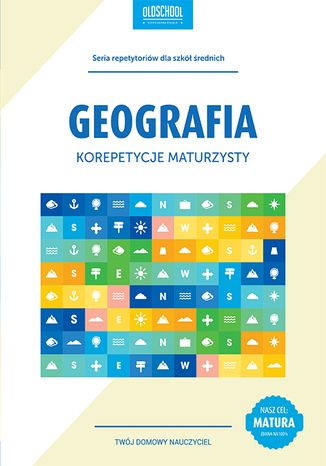Категорії
-
- Біткойн
- Ділова жінка
- Коучинг
- Контроль
- Електронний бізнес
- Економіка
- Фінанси
- Фондова біржа та інвестиції
- Особисті компетенції
- Комп'ютер в офісі
- Комунікація та переговори
- Малий бізнес
- Маркетинг
- Мотивація
- Мультимедійне навчання
- Нерухомість
- Переконання та НЛП
- Податки
- Соціальна політика
- Порадники
- Презентації
- Лідерство
- Зв'язки з громадськістю
- Звіти, аналізи
- Секрет
- Соціальні засоби комунікації
- Продаж
- Стартап
- Ваша кар'єра
- Управління
- Управління проектами
- Людські ресурси (HR)
-
- Architektura i wnętrza
- Безпека життєдіяльності
- Biznes i Ekonomia
- Будинок та сад
- Електронний бізнес
- Ekonomia i finanse
- Езотерика
- Фінанси
- Особисті фінанси
- Бізнес
- Фотографія
- Інформатика
- Відділ кадрів та оплата праці
- Для жінок
- Комп'ютери, Excel
- Бухгалтерія
- Культура та література
- Наукові та академічні
- Охорона навколишнього середовища
- Впливові
- Освіта
- Податки
- Подорожі
- Психологія
- Релігія
- Сільське господарство
- Ринок книг і преси
- Транспорт та спедиція
- Здоров'я та краса
-
- Офісні застосунки
- Бази даних
- Біоінформатика
- Бізнес ІТ
- CAD/CAM
- Digital Lifestyle
- DTP
- Електроніка
- Цифрова фотографія
- Комп'ютерна графіка
- Ігри
- Хакування
- Hardware
- IT w ekonomii
- Наукові пакети
- Шкільні підручники
- Основи комп'ютера
- Програмування
- Мобільне програмування
- Інтернет-сервери
- Комп'ютерні мережі
- Стартап
- Операційні системи
- Штучний інтелект
- Технологія для дітей
- Вебмайстерність
-
- Антології
- Балада
- Біографії та автобіографії
- Для дорослих
- Драми
- Журнали, щоденники, листи
- Епос, епопея
- Нарис
- Наукова фантастика та фантастика
- Фельєтони
- Художня література
- Гумор, сатира
- Інше
- Класичний
- Кримінальний роман
- Нехудожня література
- Художня література
- Mity i legendy
- Лауреати Нобелівської премії
- Новели
- Побутовий роман
- Okultyzm i magia
- Оповідання
- Спогади
- Подорожі
- Оповідна поезія
- Поезія
- Політика
- Науково-популярна
- Роман
- Історичний роман
- Проза
- Пригодницька
- Журналістика
- Роман-репортаж
- Romans i literatura obyczajowa
- Сенсація
- Трилер, жах
- Інтерв'ю та спогади
-
- Археологія
- Bibliotekoznawstwo
- Кінознавство / Теорія кіно
- Філологія
- Польська філологія
- Філософія
- Finanse i bankowość
- Географія
- Економіка
- Торгівля. Світова економіка
- Історія та археологія
- Історія мистецтва і архітектури
- Культурологія
- Мовознавство
- літературні студії
- Логістика
- Математика
- Ліки
- Гуманітарні науки
- Педагогіка
- Навчальні засоби
- Науково-популярна
- Інше
- Психологія
- Соціологія
- Театральні студії
- Богослов’я
- Економічні теорії та науки
- Transport i spedycja
- Фізичне виховання
- Zarządzanie i marketing
-
- Безпека життєдіяльності
- Історія
- Дорожній кодекс. Водійські права
- Юридичні науки
- Охорона здоров'я
- Загальне, компендіум
- Академічні підручники
- Інше
- Закон про будівництво і житло
- Цивільне право
- Фінансове право
- Господарське право
- Господарське та комерційне право
- Кримінальний закон
- Кримінальне право. Кримінальні злочини. Кримінологія
- Міжнародне право
- Міжнародне та іноземне право
- Закон про охорону здоров'я
- Закон про освіту
- Податкове право
- Трудове право та законодавство про соціальне забезпечення
- Громадське, конституційне та адміністративне право
- Кодекс про шлюб і сім'ю
- Аграрне право
- Соціальне право, трудове право
- Законодавство Євросоюзу
- Промисловість
- Сільське господарство та захист навколишнього середовища
- Словники та енциклопедії
- Державні закупівлі
- Управління
-
- Африка
- Альбоми
- Південна Америка
- Центральна та Північна Америка
- Австралія, Нова Зеландія, Океанія
- Австрія
- Азії
- Балкани
- Близький Схід
- Болгарія
- Китай
- Хорватія
- Чеська Республіка
- Данія
- Єгипет
- Естонія
- Європа
- Франція
- Гори
- Греція
- Іспанія
- Нідерланди
- Ісландія
- Литва
- Латвія
- Mapy, Plany miast, Atlasy
- Мініпутівники
- Німеччина
- Норвегія
- Активні подорожі
- Польща
- Португалія
- Інше
- Przewodniki po hotelach i restauracjach
- Росія
- Румунія
- Словаччина
- Словенія
- Швейцарія
- Швеція
- Світ
- Туреччина
- Україна
- Угорщина
- Велика Британія
- Італія
-
- Філософія життя
- Kompetencje psychospołeczne
- Міжособистісне спілкування
- Mindfulness
- Загальне
- Переконання та НЛП
- Академічна психологія
- Психологія душі та розуму
- Психологія праці
- Relacje i związki
- Батьківство та дитяча психологія
- Вирішення проблем
- Інтелектуальний розвиток
- Секрет
- Сексуальність
- Спокушання
- Зовнішній вигляд та імідж
- Філософія життя
-
- Біткойн
- Ділова жінка
- Коучинг
- Контроль
- Електронний бізнес
- Економіка
- Фінанси
- Фондова біржа та інвестиції
- Особисті компетенції
- Комунікація та переговори
- Малий бізнес
- Маркетинг
- Мотивація
- Нерухомість
- Переконання та НЛП
- Податки
- Соціальна політика
- Порадники
- Презентації
- Лідерство
- Зв'язки з громадськістю
- Секрет
- Соціальні засоби комунікації
- Продаж
- Стартап
- Ваша кар'єра
- Управління
- Управління проектами
- Людські ресурси (HR)
-
- Антології
- Балада
- Біографії та автобіографії
- Для дорослих
- Драми
- Журнали, щоденники, листи
- Епос, епопея
- Нарис
- Наукова фантастика та фантастика
- Фельєтони
- Художня література
- Гумор, сатира
- Інше
- Класичний
- Кримінальний роман
- Нехудожня література
- Художня література
- Mity i legendy
- Лауреати Нобелівської премії
- Новели
- Побутовий роман
- Okultyzm i magia
- Оповідання
- Спогади
- Подорожі
- Поезія
- Політика
- Науково-популярна
- Роман
- Історичний роман
- Проза
- Пригодницька
- Журналістика
- Роман-репортаж
- Romans i literatura obyczajowa
- Сенсація
- Трилер, жах
- Інтерв'ю та спогади
-
- Філософія життя
- Міжособистісне спілкування
- Mindfulness
- Загальне
- Переконання та НЛП
- Академічна психологія
- Психологія душі та розуму
- Психологія праці
- Relacje i związki
- Батьківство та дитяча психологія
- Вирішення проблем
- Інтелектуальний розвиток
- Секрет
- Сексуальність
- Спокушання
- Зовнішній вигляд та імідж
- Філософія життя
Kto jest gentlemanem? Zdaniem Mary-Ann Cooper na pewno nie jest nim jej zabójczo przystojny szef, nadęty bubek z ego wielkości Francji, doskonały przykład na to, że idealnie skrojony garnitur to nie wszystko. Chociaż bez wątpienia wygląda w nim świetnie. Mary-Ann ma dwadzieścia siedem lat, otyłego kocura o imieniu Bob, pracę, której szczerze nie cierpi, a także problem z asertywnością i skłonność do pokrywania się zdradzieckim rumieńcem w sytuacjach stresowych... I to w zasadzie wszystko, co można zapisać w życiowym bilansie po stronie aktywów. Według jej najlepszej przyjaciółki Bonnie Mary-Ann jest na prostej drodze ku samotnej starości z kotem u boku. Pełna dobrych chęci Bonnie postanawia więc zeswatać ją ze swoim znajomym - przystojnym i bogatym Benem. Jednak dobre chęci w przypadku Mary-Ann nie wystarczą, a zaaranżowana przez przyjaciółkę romantyczna wycieczka zamienia się w iście piekielne doświadczenie. Jak się okazuje, gentlemanem może być każdy. Szczególnie ktoś, kogo o to nie podejrzewasz!
Genua i Liguria. Travelbook. Wydanie 1
Paweł Pomykalski, Beata Pomykalska
Nadmorska Liguria od ponad stulecia przyciąga śmietankę towarzyską, inspiruje artystów, zachwyca obieżyświatów i urlopowiczów. Śródziemnomorska przyroda, plaże i kolorowe miasteczka "przyklejone" do urwistych przybrzeżnych skał są tu chronione w ramach znakomitych parków: Narodowego Cinque Terre i Krajobrazowego Portovenere. Głównym ośrodkiem regionu jest portowa Genua, rodzinne miasto Krzysztofa Kolumba, słynąca z niezliczonych zabytków, ciekawych muzeów, latarni morskiej i wspaniałego akwarium morskiego. Buon viaggio! Kolorowe miasteczka na nadmorskich skałach Śródziemnomorska przyroda Plaże Zatoki Genueńskiej Zabytkowe pałace i kościoły Morskie atrakcje Genui Znakomita kuchnia regionalna Travelbook to Twój niezastąpiony towarzysz podróży. Wskaże Ci najważniejsze atrakcje, podpowie, czego szukać poza głównymi szlakami, i wprowadzi w świat miejscowych obyczajów. Znajdziesz w nim opisy najciekawszych regionów i miast, a sprawdzone informacje praktyczne umożliwią staranne zaplanowanie podróży. Książka autorów bloga adventum.com.pl Beata i Paweł Pomykalscy - Duet w pracy i życiu, póki co skutecznie łączący życie zawodowe z zainteresowaniami. Z urodzenia i wyboru związani z ukochanym Górnym Śląskiem, któremu poświęcają szczególnie dużo swojej uwagi. Jeden raz w życiu zrobili to, co modne, czyli wybrali studia politologiczne, czego jednak nie żałują, bo studia nie przeszkadzały im w poszukiwaniu pomysłu na życie. Paweł kształcił się w dziedzinie fotografii, co zaowocowało wieloma publikacjami oraz wystawami, a Beata w językach i kulturze Słowian południowych, co doprowadziło ją do momentu, w którym przygotowuje się do obrony doktoratu związanego ze współczesną Serbią. Jeszcze na studiach zaczęli przygodę z (własnymi) książkami. Od 2008 r. tworzą cykl albumów fotograficzno-historycznych na temat śląskiego dziedzictwa potentatów przemysłowych. Wydają również przewodniki po państwach Europy (m.in. pierwszy w Polsce przewodnik po Bośni i Hercegowinie) oraz jako miłośnicy wielkich miast - po metropoliach europejskich. Udzielają się także na rzecz promocji turystyki w swoim regionie oraz ulubionej architektury modernistycznej.
Geodezyjne pomiary szczegółowe. Klasyczne metody pomiarowe sieci geodezyjnych
Podręcznik przeznaczony jest dla studentów geodezyjnych studiów I i II stopnia. Może być także przydatny dla inżynierów i techników geodetów oraz specjalistów z dziedzin pokrewnych. Opracowanie w podstawowej części obejmuje zakres wykładów z geodezyjnych pomiarów szczegółowych nauczanych na wydziałach geodezyjnych wyższych uczelni technicznych. Przy omawianiu poszczególnych zagadnień starano się uwzględniać wymogi nowych technologii pomiarowych, jednak główny nacisk położono na zagadnienia z zakresu metod klasycznych, dostosowane do obowiązujących w geodezji nowych instrukcji i standardów technicznych. Celem opracowania nie jest więc zastąpienie obowiązujących standardów technicznych, a jedynie uzupełnienie procesu dydaktycznego o współczesne treści. Ze względu na szeroką tematykę przedmiotu zagadnienia związane z pomiarami sytuacyjno-wysokościowymi metodą tachimetryczną oraz zastosowaniem satelitarnych technik pomiarowych i naziemnego skaningu laserowego w pomiarach szczegółowych będą omówione w odrębnym podręczniku.
Geografia fizyczna Wyżyny Śląskiej
Geografia fizyczna Wyżyny Śląskiej stanowi kompendium wiedzy o jednym z najciekawszych regionów fizycznogeograficznych w Polsce. Przedstawia obszar, gdzie z jednej strony wszystkie elementy środowiska noszą piętno antropogenicznych przeobrażeń, a z drugiej strony zachowały się tereny o wyjątkowych walorach przyrodniczych i krajobrazowych w skali kraju i Europy. Książka jest bogato ilustrowana poglądowymi mapami, szkicami i przekrojami. Sto fotografii przybliża różnorodność i piękno krajobrazu oraz charakterystyczne obiekty przyrody ożywionej i nieożywionej regionu śląskiego. Praca jest skierowana do studentów geografii, ale niektóre treści mogą być wykorzystane przez nauczycieli realizujących programy edukacji regionalnej w szkołach średnich.
Geografia. Korepetycje maturzysty
Potrzebujesz korepetycji z geografii? Powtórki przed maturą? Szybkiej pomocy przed klasówką? Nowa seria repetytoriów dla licealistów "OLDSCHOOL - stara dobra szkoła" to skuteczna nauka tego, czego naprawdę potrzebujesz. Weź to na rozum! My w Ciebie wierzymy! Seria została przygotowana przez doświadczonych korepetytorów i metodyków, we współpracy z nauczycielami i samymi maturzystami. Repetytorium przeznaczone jest dla wszystkich uczniów szkół średnich, którzy potrzebują powtórki z geografii, a zarazem chcą poznać ćwiczenie przydatne na maturze. Może też być świetną pomocą dla nauczycieli i korepetytorów. Główne zalety repetytorium: - wszystkie zagadnienia z geografii fizycznej i społeczno-ekonomicznej Polski i świata - przykłady zadań maturalnych wraz ze szczegółowo omówionymi rozwiązaniami - ilustracje, mapy, dane statystyczne - przejrzysty układ oraz staranna szata graficzna - zgodność z wymaganiami maturalnymi na poziomie podstawowym i rozszerzonym Domowe korepetycje tylko z OLDSCHOOL!
Geografia myślenia. Dlaczego ludzie Wschodu i Zachodu myślą inaczej
"Geografia myślenia" to książka, w której w niezwykle interesujący sposób przeanalizowane są tajniki ludzkiego myślenia, a dokładniej - różnice w sposobie pojmowania świata i myślenia o drugim człowieku uwarunkowane kulturowo. Okazuje się, że miejsce, w którym mieszkamy, wychowujemy się, wywiera olbrzymi wpływ na to, jak myślimy i kim dzięki temu jesteśmy. W dobie nieustających konfliktów, spowodowanych często właśnie nieporozumieniami na tle kulturowym, książka ta może stanowić rodzaj przewodnika, klucza do zrozumienia zagadki człowieka w świecie pełnym różnorodności - pięknej, lecz zarazem niebezpiecznej. Coraz mocniejsza sieć wzajemnych powiązań politycznych i gospodarczych nie musi rodzić konfliktów nie do rozwiązania - przekonuje nas prof. Nisbett. Wystarczy tylko uświadomić sobie różnice w sposobie myślenia wynikające z przynależności do odmiennych kręgów kulturowych, a wielu nieporozumień można będzie uniknąć. Niesamowity przewodnik dla tych, którzy na co dzień, w pracy, mają kontakty z ludźmi innych kultur - znajdziemy tu podpowiedź, jak radzić sobie w sytuacjach biznesowych i na jakim tle mogą pojawić się problemy. Wyjątki z recenzji: Oto kolejna ważna książka Richarda E. Nisbetta. Autor niezbicie wykazuje, że eksperymenty laboratoryjne ograniczające się do amerykańskich studentów, czy nawet do mieszkańców półkuli zachodniej, nie pomogą nam zrozumieć, jak myśli ogół ludzi. Ta książka dowodzi, że wyjaśnianie sposobu myślenia właściwego dla kultur Wschodu nie może być uznawane za ciekawostkę, ale za konieczność - jeżeli rzeczywiście chcemy rozwiązać problemy współczesnego świata. Ignorując naukę płynącą z tej książki, narażamy się na niebezpieczeństwo. - Robert J. Sternberg Kulturowe różnice poznawcze przedstawione w tej przełomowej książce są znacznie głębsze i mają znacznie szerszy zasięg, niż komukolwiek się to mogło wydawać jeszcze dziesięć lat temu. Wyniki badań zaskakują zwolenników poglądów o uniwersalnym charakterze ludzkiego myślenia, imponują badaczom kultury i prowokują do myślenia wszystkich zainteresowanych ludzkim poznaniem. - Shinobu Kitayama
Geografia świata to uporządkowana w trzy tysiące haseł wiedza na temat obiektów geograficznych, jak góry, jeziora, morza i rzeki, państwa, miasta i regiony. W opracowaniu ujęto również zjawiska tworzące środowisko geograficzne, czyli przyrodę i gospodarkę. Zwięzłe i przystępnie zaprezentowane hasła zostały zilustrowane dwoma tysiącami fotografii, map, rysunków i schematów.
Geografia w ujęciu humanistycznym. Wybór prac Krystyny Rembowskiej
Tom obejmuje prace Krystyny Rembowskiej publikowane na przełomie XX i XXI w. Prezentują one humanistyczny, antynaturalistyczny model geografii, który zakłada odrębność i swoistość charakteru metodologicznego nauk społecznych, nazywanych w tym ujęciu naukami humanistycznymi. Zebrano je w trzech rozdziałach: pierwszym – Teoria i metodologia geografii społeczno-ekonomicznej (człowieka) – dziesięć prac, drugim – Teoretyczno-metodologiczne aspekty geografii społecznej i regionalnej (społeczno-regionalnej)– sześć prac i trzecim – Teoretyczno-metodologiczne wymiary Geografii Kultury – osiem
Geografia wyobrażona regionu. Literackie figury przestrzeni
Daniel Kalinowski, Adela Kuik-Kalinowska, Małgorzata Mikołajczak
Seria prezentuje prace podejmujące nowatorskie interdyscyplinarne badania nad regionalizmem literackim. Jej celem jest ukazanie tradycji literackich badań regionalnych, rozpoznanie sytuacji literatury regionalnej w Polsce i rekonceptualizacja obszaru literaturoznawstwa regionalistycznego w perspektywie nowych orientacji pojawiających się w światowej humanistyce. „Geografia wyobrażona” to jedno z tych pojęć, które uzmysławiają ekspansywny potencjał zwrotu przestrzennego. Wywiedziona z rozważań Edwarda Saida, który o geografii wyobrażonej pisał w kontekście praktyk kolonizacyjnych, podlega dziś znamiennej dekontekstualizacji i dzieląc los innych terminów, trafiających na podatny grunt badań kulturowych, funkcjonuje w szerokim − transdyscyplinarnym i ostatecznie nieustalonym − znaczeniu. W obszarze współczesnego literaturoznawstwa „geografia wyobrażona” jest jednym z haseł wywoławczych literackiej imagologii terytorialnej i w dynamicznie rozwijających się badaniach nad przestrzenią sygnuje kulturowe reprezentacje i zapisy miejsc, przy czym jej domeną pozostaje sfera obrazowania transmitującego relacje przestrzeni i władzy. W takim rozumieniu geografia wyobrażona zbliża się do geopoetyki. Jak się wydaje, na gruncie badań literaturoznawczych zakresy znaczeniowe obu pojęć są podobne, choć można by też, różnicując ich status, powiedzieć, że geografia wyobrażona stanowi przedmiot badań geopoetyki. Tak właśnie traktują ją autorzy tej książki, piszący o geografii wyobrażonej regionu. Prezentowany tu katalog tematyczny obejmuje bogatą topikę przestrzenną − mieszczą się w niej zarówno krajobrazy kulturowe, motywy i mity spacjalne (wraz z ich społecznym, historycznym i politycznym uwarunkowaniem), jak i konstruująca je metaforyka, tj. zjawiska, które w podtytule książki ujęte zostały jako „literackie figury przestrzeni”.
Geograficzno-polityczne uwarunkowania sytuacji mniejszości polskiej na Litwie i Łotwie po 1990 roku
Katarzyna Leśniewska-Napierała
Kwestia mniejszości narodowych, zwłaszcza w ostatnich latach, jest przedmiotem rozważań specjalistów z różnych dyscyplin naukowych. W pracy zostały zaprezentowane geograficzno-polityczne badania porównawcze mniejszości polskiej na Litwie i Łotwie. Ukazano warunki funkcjonowania Polaków w obu krajach, co umożliwiło weryfikację wielokrotnie powielanych stereotypów na temat ich sytuacji. Dodatkowo podjęcie badań nad mniejszością polską na Łotwie jest próbą wypełnienia luki, jaka występuje – zdaniem autorki – w literaturze geograficznej dotyczącej sytuacji Polaków poza granicami kraju. Wybór mniejszości polskiej na Litwie i Łotwie został podyktowany nie tylko osobistymi zainteresowaniami autorki i jej wcześniejszymi badaniami, lecz także atrakcyjnością tego tematu wynikającą z historycznych zmienności stosunków między większością i mniejszością, jak również obecną rangą relacji na linii Polska–Litwa oraz Polska–Łotwa.
Praca jest poświęcona przemianom narodowościowym, jakie zachodziły w Polsce po 1944 r., ze szczególnym uwzględnieniem mniejszości narodowych i etnicznych wschodniej Polski, gdzie zmiany te, zwłaszcza w aspekcie terytorialnym i ilościowym, były bardzo dynamiczne i wewnętrznie silnie zróżnicowane. Po upływie kilkudziesięciu lat i licznych przekształceniach sytuacji politycznej i prawnej można pokusić się o zbadanie, w jaki sposób polityka państwa, zarówno w warunkach ustroju totalitarnego, jak i demokratycznego, wpływa na strukturę narodowościową. W jaki sposób system polityczny i jego zmiany warunkują relacje między większością a mniejszościami narodowymi? Jak w różnych okresach kształtowała się tożsamość narodowa oraz instytucjonalizacja działalności społecznej i kulturalnej mniejszości narodowych i etnicznych „skazanych” przez władze na rozproszenie i stopniową asymilację? Co było głównymi przyczynami zróżnicowanej sytuacji społeczno-politycznej omawianych mniejszości w okresie PRL? Czy zmiany ustrojowe, zapoczątkowane w 1989 r., umożliwiły w praktyce równoprawne funkcjonowanie poszczególnych mniejszości narodowych i etnicznych? W jaki sposób liderzy omawianych mniejszości postrzegają i oceniają obecną sytuację narodowości, które reprezentują? Tak sformułowane pytania są zasadniczymi problemami badawczymi podjętymi w niniejszej pracy.
Geographia. Studia et Dissertationes. T. 31
W kolejnym tomie niniejszej serii wydawniczej autorzy omawiają następujące zagadnienia: badania flory Boru Buzułuckiego i współczesne podejście do jej ochrony, skład chemiczny wód powierzchniowych i aluwiów w dorzeczu górnej Angary (południowa Syberia), krajobrazy eoliczne obszarów wododziałowych na obszarze Polesia Białoruskiego, badania odporności skał Wyżyny Śląskiej z zastosowaniem młotka Schmidta, funkcje obszarów wiejskich województwa śląskiego, interurbacje na terenie Polski w ujęciu geograficzno-historycznym, a także etapy rozwoju gospodarczego i przestrzennego Ustronia.
Geographia. Studia et Dissertationes. T. 32
Na niniejszy tom składają się opracowania dotyczące: erozji gleb leśnych; przewietrzania dolin w świetle warunków morfologicznych Ojcowskiego Parku Narodowego; roli roślinności jako inżynierów systemowych w regeneracji odkształconych przez człowieka ekosystemów piaszczystych; pagórków fitogenicznych jako specyficznych form rzeźby; współczesnego stanu egzogeoekologicznego Zatoki Cziwyrkujskiej i przesmyku Miagkaja Karga (Bajkał), a także usług gastronomicznych w Sosnowcu.
Geographia. Studia et Dissertationes. T. 33
Autorzy kolejnego tomu niniejszego wydawnictwa ciągłego podejmują następujące zagadnienia: rozwój pokrywy roślinnej i glebowej na wyrobiskach po eksploatacji piasku; wydmy krawędziowe na obszarze Przybajkala; kształtowanie się i rozwój strefy brzegowej Zbiornika Irkuckiego; zmiany roślinności psammostepów na wyspie Olchon (Bajkał); miejsce i rola ogrodów działkowych w przestrzeni miejskiej; potencjał turystyczny a możliwości kształtowania produktów turystycznych w regionie, a także potencjał ekonomiczno-geograficzny współpracy transgranicznej Białorusi i Rosji.
Geographia. Studia et Dissertationes. T. 35
W poszczególnych artykułach kolejnego tomu niniejszego wydawnictwa seryjnego autorzy zaprezentowali m.in.: wyspy piaszczyste w dolinach rzecznych (na przykładzie doliny Prypeci na Polesiu Białoruskim), potencjał rolny Białorusi i jego zrównoważone wykorzystanie, metropolizację w konurbacji górnośląskiej, a także uwarunkowania i konsekwencje przemian społeczno-gospodarczych Czeladzi.
Geoinżynieria. Metody modyfikacji podłoża gruntowego
W skrypcie omówiono główne metody ulepszania podłoża gruntowego, tj. zagęszczanie, wymianę, prekonsolidację, cementację i stabilizację oraz zbrojenie i umocnienia biotechniczne zboczy i skarp. Skrypt stanowi znaczące uzupełnienie literatury dotyczącej problemów fundamentowania, geotechniki i budownictwa ziemnego. Mogą z niego korzystać studenci Wydziału Inżynierii Środowiska i Wydziału Inżynierii Lądowej oraz studenci innych politechnik i akademii rolniczych. Zawarte w skrypcie wiadomości mogą być wykorzystywane również przez inżynierów-projektantów i wykonawców oraz pełniących nadzory budowlane.
















